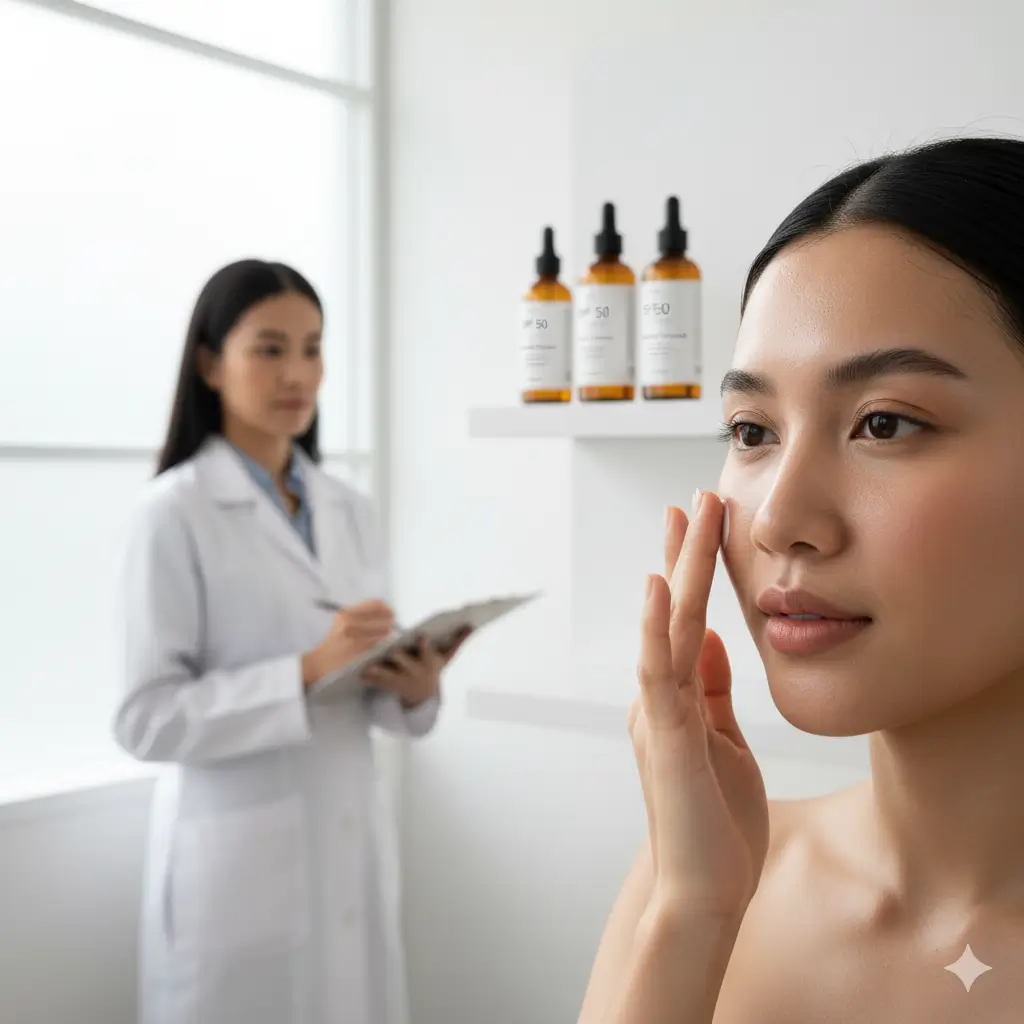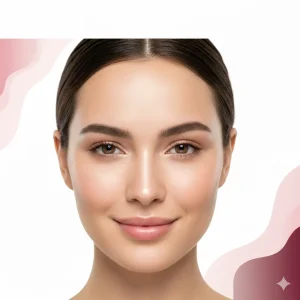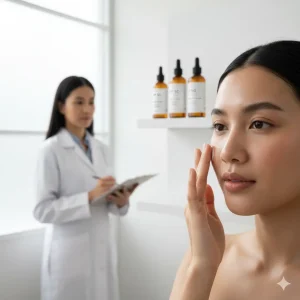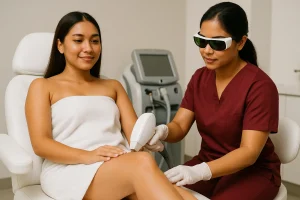Key Takeaways
Q1: What is “7 Facts About Sun Cream for Oily Skin” and why does it matter for microneedling results?
A: These essential facts explain how the right sun cream for oily skin can protect freshly-treated skin after microneedling, preventing post-inflammatory hyperpigmentation, clogged pores, and dullness while ensuring optimal collagen remodeling for smoother, radiant results.
Q2: How does it work — what’s the quick answer?
A: Microneedling creates micro-channels that temporarily weaken the skin barrier. Choosing a lightweight, oil-free, broad-spectrum sunscreen helps defend against UV damage, balance sebum, and preserve your rejuvenation outcome without irritation or greasiness.
Q3: What should readers do next?
A: Schedule a consultation with a certified medical aesthetic doctor at Lara Clinic (Shah Alam / Wangsa Maju) to personalise your microneedling aftercare and receive expert recommendations on safe, non-comedogenic sun cream oily skin formulations tailored to your needs.
Choosing the right sun cream for oily skin after microneedling is more than a skincare detail—it’s a scientific step that can make or break your post-treatment glow.
When your skin undergoes microneedling, the micro-channels created by fine needles temporarily disrupt your barrier, making protection and product choice absolutely critical.
For those living in Malaysia’s humid climate—especially in urban areas like Shah Alam and Wangsa Maju—finding a formula that shields against UV while keeping oil at bay becomes an art backed by medical precision.
Experience the beauty of elegance, the trust of reliability,
and the grace of delicacy at Lara Clinic
At Lara Clinic, licensed medical doctors and therapeutically trained staff handle every microneedling procedure using MDA- and FDA-approved devices.
Each session combines healthcare accuracy with spa-like comfort, helping clients rebuild collagen, fade acne scars, and refine pores safely.
Post-treatment, the clinic’s experts emphasise sunscreen use as the first line of defence against premature pigmentation and redness—particularly for clients with oily or combination skin.
The science is simple but often overlooked: oily skin still needs hydration and consistent SPF, but with formulations designed to avoid clogged pores or greasy residue.
By understanding how sunscreen interacts with your newly renewed skin, you can extend your microneedling results, prevent inflammation, and maintain a long-lasting healthy glow.
Testimonials from satisfied clients reinforce this trust.
“Dr Ira was thorough in explaining my acne condition and suggested the right treatment. The staff were friendly and never hard-sold anything.”
Nur Nabilah Khairunnisa
“My skin improved after just a few sessions, and now I wear almost no makeup!”
Syaida Inarah Murad
“Knowledgeable doctors, clean environment, and excellent aftercare—I finally found my go-to aesthetic clinic.”
Diyana Zainudin
By the end of this guide, you’ll discover seven dermatologist-backed facts that reveal how using the correct sun cream for oily skin directly influences your microneedling outcome—and how Lara Clinic ensures your post-treatment care meets medical standards.
Why Does Sunscreen Matter After Microneedling for Oily Skin?
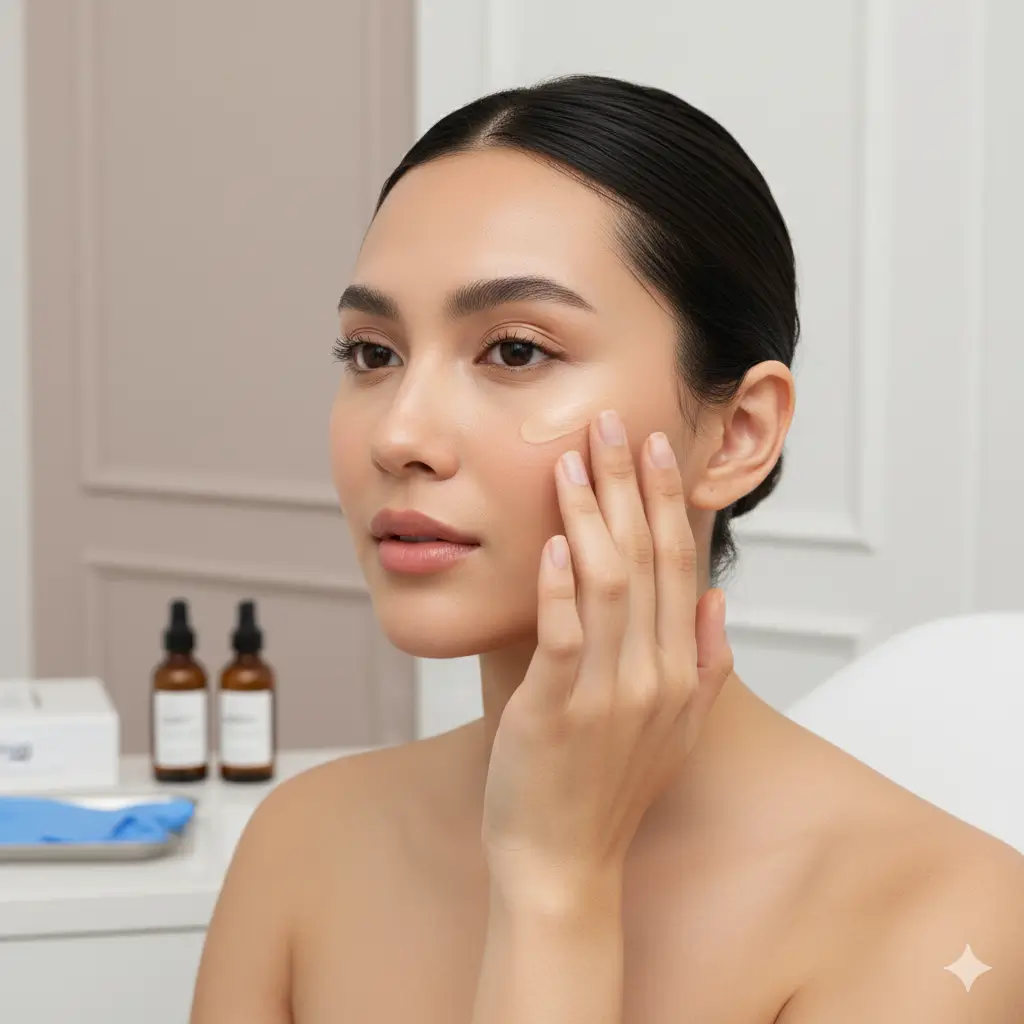
The first 24 hours after microneedling leave your skin more vulnerable to UV damage, making a suitable sun cream for oily skin essential to prevent redness, dark spots, and irritation.
Microneedling temporarily disrupts the stratum corneum, which means even mild UV exposure can lead to post-inflammatory hyperpigmentation (PIH) or delayed healing.
A lightweight, broad-spectrum SPF 30 or higher, recommended by Lara Clinic, acts as a defensive shield while allowing your skin to breathe and recover naturally.
What Barrier Changes Happen Post-Microneedling and How Does Sunscreen Help?
Freshly treated skin loses moisture faster and becomes more reactive. Non-comedogenic SPF formulas prevent trans-epidermal water loss (TEWL) and reduce oxidative stress, keeping oily skin balanced rather than congested.
Which Risks Increase Without Proper SPF Use?
Skipping sunscreen after treatment increases risks of PIH, dryness, and uneven tone. Even short exposure to indoor light or computer screens can worsen irritation on oily skin types.
What Does “Non-Comedogenic, Broad-Spectrum” Mean for Oily Skin?
It means the sunscreen protects against both UVA & UVB rays without clogging pores—critical when sebaceous glands are active post-procedure.
How Does Oily Skin Affect Microneedling Recovery?
Excess sebum can trap heat and bacteria, slightly slowing recovery time. That’s why after microneedling, oily skin requires careful cleansing and hydration rather than stripping.
Lara Clinic recommends soothing, gel-based hydrators that contain panthenol or hyaluronic acid, followed by a breathable SPF to calm the skin barrier.
What Role Do Sebum and Pore Size Play?
Sebum lubricates the skin but can mix with dead cells and clog the healing micro-channels, triggering breakouts. Using oil-free SPF minimizes that risk.
Which Aftercare Tweaks Suit Oily Skin?
- Avoid heavy creams.
- Use micellar or gentle gel cleansers twice daily.
- Apply matte-finish sunscreen in the morning to manage shine.
How Do Lightweight Gels vs Creams Change Comfort?
Gels feel refreshing and lower skin temperature—ideal for humid Malaysian weather.
What Role Does UV Exposure Play in Microneedling Outcomes?
Even minor sun exposure can reverse collagen gains achieved through microneedling. UVA rays penetrate deeply and disrupt healing.
Research published in Dermatologic Therapy (2021) showed patients who skipped SPF after microneedling saw 60 % less collagen density over 8 weeks.
Which Everyday UV Sources Matter?
Indirect sunlight, fluorescent office lights, and smartphone screens all emit low-level UV radiation capable of triggering oxidative stress.
How Does Consistent SPF Use Preserve Results?
Regular application maintains collagen integrity and sustains the rejuvenated glow promoted by professional microneedling.
Which Sun Cream Is Right for Oily Skin Post-Microneedling?
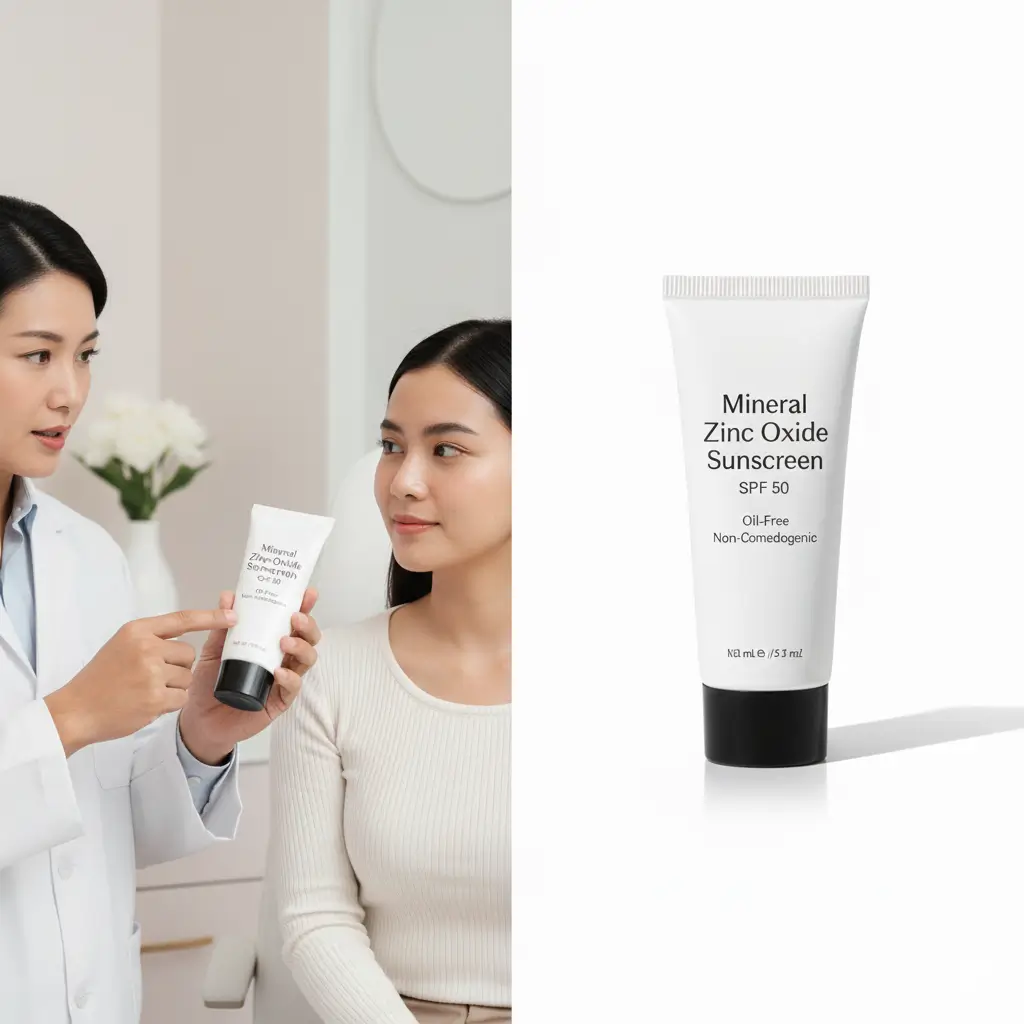
Choosing the wrong SPF can lead to breakouts or irritation that undo your session’s benefits.
At Lara Clinic’s Microneedling Program, dermatologists suggest mineral-based, zinc oxide sunscreens for sensitive or acne-prone clients.
Chemical vs Mineral — What Works Better?
Mineral sunscreens form a physical shield with ingredients like zinc oxide and titanium dioxide, reflecting light rather than absorbing it—making them safer on freshly needled skin.
Which Labels to Look For
- Oil-free
- Fragrance-free
- Non-comedogenic
- Broad spectrum SPF 30 +
How to Patch-Test
Apply on a small area (behind the ear) 12 hours before full use to detect possible sting or redness.
When Should You Apply Sun Cream After Microneedling?
Timing matters. You may start applying SPF only after 24 hours—once redness subsides.
Applying too early can sting; waiting too long exposes fragile skin to damage.
How Often to Reapply for Oily Skin?
Every 2–3 hours if outdoors; every 4 hours indoors. Choose spray-on or fluid textures to refresh without shine.
What Routine Prevents Pilling?
- Hydrating gel
- Oil-free moisturiser
- Matte finish SPF
Which Key Actives Support Oily Skin Around Microneedling?
Hyaluronic acid maintains hydration; niacinamide controls oil and redness. Together they build stronger post-treatment skin tolerance.
Which Antioxidants Are Safest Early On?
Low-strength Vitamin C derivatives (MAP or SAP) help brighten and repair without irritating.
What to Pause Temporarily
Retinoids, AHA/BHA, or exfoliating acids—resume only after Day 5 when sensitivity decreases.
How Do You Protect Against Post-Inflammatory Hyperpigmentation (PIH)?
Melanin-rich, oily skin has a higher PIH risk after microneedling. Sunscreen is your best preventive step.
Which Habits Reduce PIH Risk?
- Reapply SPF diligently.
- Avoid direct sunlight 10 a.m.–4 p.m.
- Wear hats or use umbrellas outdoors.
What Brightening Agents Help Later?
Azelaic acid and tranexamic acid are clinic-approved options once healing completes.
What Is the 0–18 Hour Aftercare for Oily Skin?
The first 18 hours determine healing quality. Only sterile saline spray and a light hydrating serum should touch your face. No SPF yet.
Which Cleansing Approach Works Best?
Use plain water rinses; avoid foaming cleansers until Day 1.
How to Handle Sweat and Workouts
Skip gyms and saunas for 24 hours—sweat + bacteria = irritation.
What Should Days 1–6 Look Like for SPF and Oil Control?
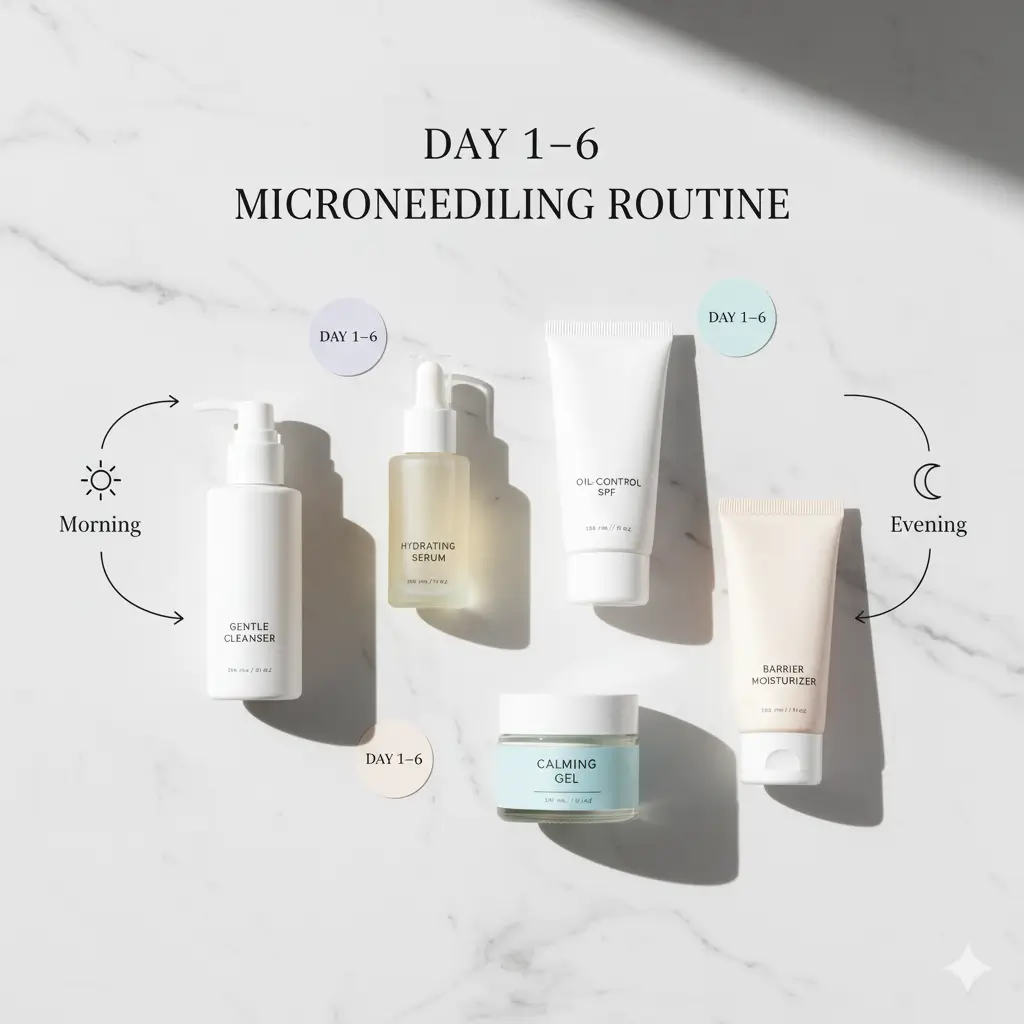
Morning: gentle wash → hydrating serum → oil-control SPF.
Evening: cleanser → barrier-repair moisturiser → optional calming gel.
When to Reintroduce Actives
From Day 4 onwards, start niacinamide; resume retinoids at Day 7.
Which Signs Need Clinic Review
Persistent burning, pustules, or excessive oil—book a check-up at Skin Specialist.
Which Common Sun-Cream Mistakes Undermine Results?
Many users apply too little or choose thick, fragranced formulas. Both lead to congestion and patchy tone.
Why Under-Applying SPF Hurts
Two finger lengths per application ensures even UV coverage.
Avoid
Water-resistant or silicone-heavy SPF for daily wear; save them for swimming days.
How Do You Integrate Sun Cream with Lara Clinic’s Protocol?
Before your microneedling appointment, discuss your current sunscreen and skincare routine with the doctor. The clinic tailors SPF advice per skin type.
Which Aftercare Checkpoints Help Oily Skin?
Follow-ups assess oil production and pigmentation control; adjustments are made to keep results stable.
Combine Clinic Guidance with Daily SPF Habits
Lara Clinic’s experts align your post-treatment schedule with safe product timing for long-term clarity.
How Do You Maintain Results Long-Term?
Microneedling results last longer when SPF + gentle actives + hydration work together.
In Malaysia’s heat, a matte, gel-type sunscreen ensures comfort while preventing oxidation.
Which Seasonal Tweaks Help?
Switch to higher SPF 50 in dry season; SPF 30 is enough for daily indoor protection.
When to Book Maintenance
Every 3–4 months at Face Treatment Spa keeps skin texture smooth and collagen boosted.
Using the right sun cream oily skin after microneedling isn’t optional—it’s the cornerstone of effective skin renewal.
By protecting against UV damage, regulating oil, and maintaining hydration, you secure brighter, longer-lasting results.
Follow professional guidance and build sunscreen use into your everyday aesthetic routine.
Beautiful, healthy skin starts with consistent protection. If you’ve recently completed microneedling or plan to, book a personalised aftercare consultation with the certified doctors at Lara Clinic in Shah Alam or Wangsa Maju.
Experience medically-guided skincare that ensures your radiance lasts far beyond your treatment day.
Choosing the right sun cream oily skin is one of the most crucial steps after your microneedling treatment.
It’s not just about protection—it’s about preserving your results. A non-comedogenic, oil-free SPF shields your freshly treated skin from UV damage, controls shine, and prevents post-inflammatory hyperpigmentation.
At Lara Clinic, each microneedling session is tailored for Malaysia’s humid climate, ensuring oily skin remains balanced and smooth long after the procedure.
By combining dermatologist-recommended sunscreen with expert aftercare, you can maintain brighter, more refined skin and confidently enjoy your rejuvenated glow.
If you’ve recently completed or are planning a microneedling treatment, protect your results with the right sun cream oily skin—customized for your unique skin type.
Book your session today with the licensed medical team at Lara Clinic (Shah Alam or Wangsa Maju) and experience medically supervised skincare that delivers visible, lasting beauty.
FAQ
Q1. Why is using sun cream after microneedling important for oily skin?
After microneedling, your skin becomes sensitive and exposed. Applying sun cream for oily skin prevents pigmentation, irritation, and oil imbalance while safeguarding collagen repair.
Q2. When should I start applying sunscreen after microneedling?
Wait at least 24 hours post-treatment or until redness subsides. Start with a lightweight, mineral-based SPF recommended by your Lara Clinic doctor.
Q3. Can oily skin skip sunscreen on cloudy days?
No. UV rays penetrate clouds and windows, triggering oil production and hyperpigmentation even indoors. Daily SPF is essential for maintaining treatment results.
Q4. What kind of sunscreen is best for oily skin after microneedling?
Choose a non-comedogenic, oil-free, fragrance-free SPF with a matte finish. Ingredients like zinc oxide or niacinamide help protect without greasiness.
Q5. How often should I reapply sunscreen for oily skin?
Every 2–3 hours outdoors and every 4 hours indoors. Use gel or mist sunscreens for easy, shine-free reapplication during the day.

